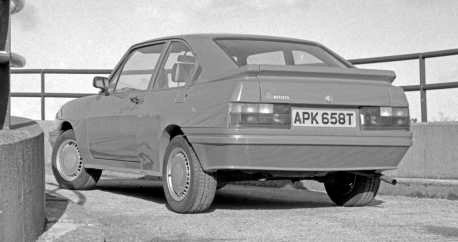How to fix a rusty Alfa-Romeo Alfasud, 1980s-style Glassfibre replacement body package

Alfa plus rusty Alfasud? This 1980s Glassfibre replacement body package was one solution.
Story by Richard Heseltine
OBSCURATICURIOSITIES FROM THE AMAZING WORLD OF ITALIAN CARS
Body conversions now comprise a significant sector of the British specialist car industry. Some are produced by kit car outfits, others by more highfalutin, cough, ‘coachbuilders’. Such reimagining is nothing new, though. Among the earliest such makeovers was the Alfa Plus which emerged in 1984.

Devised by Tim and Suzanne Cooksey of FF Kitcars & Conversions (né FibreFab under previous owners), a concern better known for its beach buggies, the concept was a sound one: Alfa Romeo Alfasuds were – and remain – great drivers’ cars. However, the use of porous Russian steel ensured they were famously prone to rot.
A glassfibre makeover was just the ticket, they reasoned.
Unlike the other British Alfasud makeover of the period, the striking the Steve Everitt-penned Alfastyle, the Alfa Plus didn’t closely resemble the donor car. If anything, it looked more like the Alfa Romeo 33. According to Kitcars & Specials magazine: “The styling was critical and original designs were chopped and changed with prototype panels being made of wood. Tim has an eye for a line and has some previous styling experience… The car had a very swept up boot lid line which gives the car an aggressive, eager to go look, although they haven’t resorted to the ineffective ‘wing’ fitted to some cars. The overall length of the car is increased by about 12 inches, and the new wings are also wider than the old, with more room in the wheel arches so that larger wheels and tyres can be fitted.”
It added: “The centre of the car retains the original dimensions so that in plan view it has an attractive and racy waisted look… The overall finish of the GRP panels is excellent, with no surface ripples or bumps… The panels bolt on to the car using the existing bolt holes where possible. For instance, the front wings are a bolt for bolt replacement. The rear wings cover the existing panel and are riveted in position. Where items of hardware need to be bolted to the GRP panels – like the bonnet hinges – special threaded bobbinsare laminated into the moulding. It is a bit more trouble to do, but it is worth it for ease of assembly.”
FF reckoned it would take a seasoned car builder roughly 50 hours to complete the work, not including spraying the glassfibre parts that were supplied by subcontractor Mako Fibreglass in a dull mattwhite finish. Priced at £1150, the package stretched to items such as third-generation Ford Escort front lamps and Talbot Horizon rear light clusters. However, despite plenty of positivity, the Alfa Plus didn’t quite live up to its makers’ expectations.
Tim Cooksey told Component Car magazine in 1985: “To be honest, we are disappointed that the powerful initial reaction has not culminated in more firm sales. We are far from dispirited, however, and it could be that we are not promoting the car properly.” A four-door variant was announced at the 1985 Sandown Park Kit Car Show but it also failed to take flight. The project was quietly dropped in late 1986, although a revival attempt was subsequently made by Plus Cars of Mid Glamorgan. There was no reversal of fortune.

